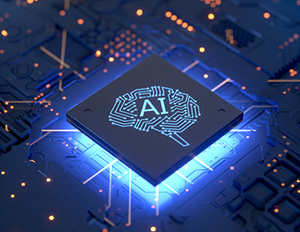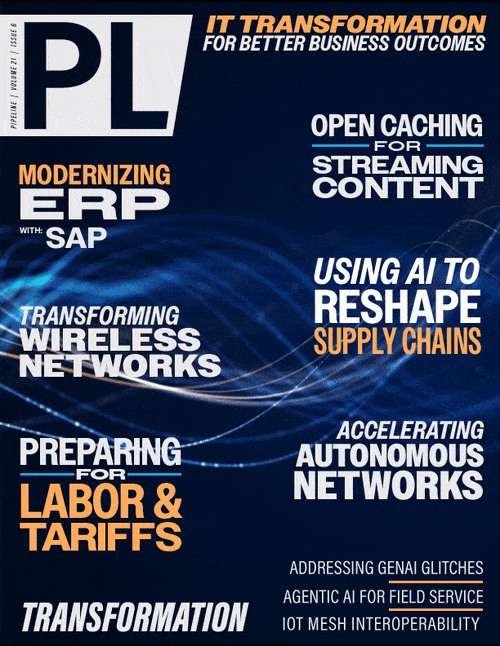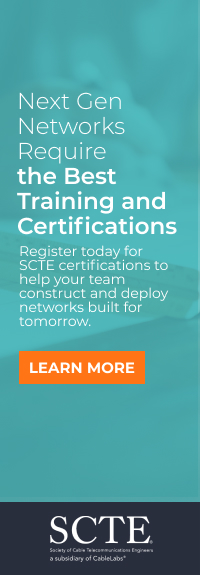How IT Initiatives and Business Transformation
Can Go Hand in Hand
By: Sharon Mandell

The overall understanding of IT and the role it plays in serving business operations has significantly changed in recent years, for the better. What was once perceived as a recurring financial burden is now viewed more positively as a fundamental catalyst necessary to drive business innovation and market leadership. This shift goes beyond simply a changing perspective; it is also about achieving real and measurable outcomes which have a direct and lasting impact on the success of a business.
The most successful organizations now share an important commonality — they understand how to leverage recent IT advancements to drive measurable business outcomes. This isn't achieved by a stroke of luck or coincidence. It is the direct result of carefully planned strategies designed to bridge the gap between technological capabilities and business goals. In doing so, global companies can enhance their performance, maintain a competitive edge within their respective industries, and improve their over efficiency.
Harnessing Technology to Achieve Seamless Digital Transformation
To meaningfully align technological investments with key objectives, practical and comprehensive approaches are needed. This must extend beyond simply recognizing IT's importance. Rather, IT initiatives should align with core business goals to make sure that the technology serves as a catalyst to achieving strategic outcomes. To accelerate this alignment, several methods can be explored:
Technology Business Management (TBM): This kind of analysis provides clear visibility into IT investments across an organization. The results from it can enable data-driven approach facilitates more informed internal conversations about allocating resources and setting strategic priorities. It shifts conversations from cost control to value creation and demonstrates IT's direct impact on business success.
For example, companies that implement TBM analysis can identify inefficiencies in IT spending and reallocate budgets toward high-impact projects. By understanding which technologies contribute the most value, businesses can make better decisions regarding software development, cloud adoption, and cybersecurity investments.
Fostering Cross-Functional Responsibility: This involves the vital break down of silos between technology teams and other departments. Establishing dedicated cross-functional teams aligned to particular business capabilities enables tech professionals to collaborate daily and directly with colleagues, from marketing, sales, operations, finance and more. This collaborative approach allows for a deeper awareness of shared goals which ensures that technology solutions are developed with a clearer understanding of the business’ needs and allows for a seamless and purposeful integration into existing workflows.
For example, in a manufacturing business, IT specialists can collaborate with supply chain managers to optimize logistics using real-time tracking and automation. This cross-functional partnerships ensures that technology adoption is not just about IT itself, but about improving other business outcomes too.
Objectives and Key Results (OKRs): These will ensure organizations go beyond traditional project and portfolio management. They encompass the focus on ambitious and measurable business outcomes that drive progress over time. By aligning work to these outcomes, tech teams can foster a culture of accountability and transparency which ensures that everyone understands how their work supports the business’ goals.
Rather than setting vague IT goals, such as improving system performance, an OKR-driven approach might define a specific goal. An example of this could be a commitment to reduce website load times by an agreed amount over a certain period of time to improve customer experience and conversion rates. This level of clarity ensures that IT efforts are directly tied to tangible business benefits.
Utilizing AI-Native Operations to Propel Innovation
As AI continues to revolutionize modern IT operations, it is also enabling teams to shift their priorities from routine maintenance to advancing key business objectives. By automating repetitive tasks and producing real-time insight, AI is empowering IT to shift focus away from reactive troubleshooting to proactive optimization. This mitigates distractions and aligns with broader business objectives.
AI-native networking is a clear example of this transformation, capable of delivering up to 90 percent less trouble tickets and nine times faster deployments. This capability helps IT teams to reduce possible downtimes and enhance the user experience. Additionally, it also allows teams to dedicate further time to initiatives which optimize supply chains, accelerate business growth, and improve customer engagement.


















